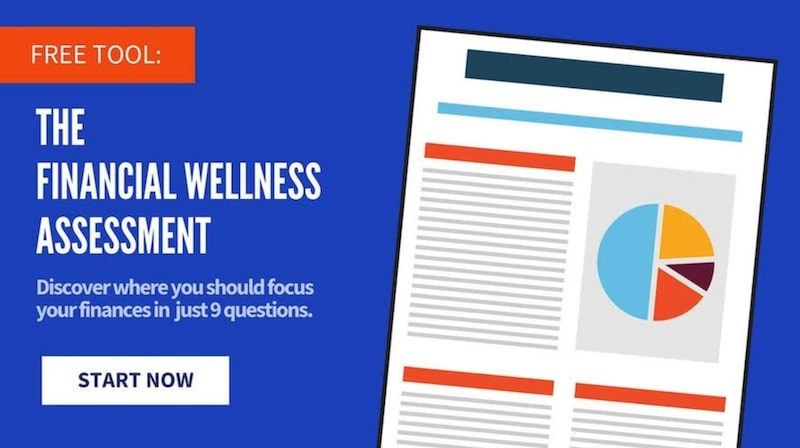The current impact that the global coronavirus pandemic has had on our daily lives is obvious. This event has touched every one of us in various ways, but you may feel particularly affected if you were thinking about retiring in the near future.
You may wonder how the fallout and long-term ramifications of the COVID-19 could change your retirement plans and timeline — and you undoubtedly have countless questions about whether there’s anything you can do to get things back on track.
The good news is that with some strategic adjustments and the right action steps, you should be able to stick to your original plan.
Here are five things you can do now to keep your retirement plans on track:
1. Invest A Portion Of Your Emergency Fund
Making withdrawals from your portfolio at the beginning of retirement when the market is down reduces the long-term trajectory of your wealth and the amount of income you have available throughout retirement.
This is known as the sequence of return risk, and it comes into play if returns are low in the few years leading up to your retirement (or during the first few years after you retire).
To combat this risk, you should enter retirement with at least one year of cash on hand to protect against a down market.
That will allow you to reduce or even eliminate this sequence of return risk because you can use this cash to meet your living expenses and allow your portfolio time to recover.
But beyond establishing that year-long runway, you may find that you have a surplus of cash. If you feel reasonably confident about weathering this market downturn without relying on existing reserves, now may be the time to consider investing excess cash in the market.
It may sound counter-intuitive to invest cash intended as a safety net, but it’s a good way to leverage your income while you’re still working for now. Plus, investing extra cash during a bear market has historically been a profitable move. Just make sure this is truly cash you will not need for any other purpose before retirement.
2. Eliminate Unnecessary Expenses To Bolster Your Savings Accounts
Everyone falls victim to lifestyle creep, but if retiring in the very near future is important, it’s time to get serious about stomping some extra expenses out of your budget.
The idea of cutting expenses sounds tragic to most people, but it doesn’t have to be. Saving isn’t about making sacrifices — it’s about keeping your priorities in mind and getting more of what you really want.
Performing a careful review of past expenditures will usually unveil at least some spending that isn’t aligned with what you value most.
To evaluate your recent purchases, print off a copy of your latest credit card statements. Go through and mark line items as high-value, medium-value, or low-value.
If you have a partner, make sure they do this as well with their own copy of the transactions. Then, cut out any spending that you deem to be low-value and put that money into your savings instead.
3. Refinance Your Mortgage
If you still have a home mortgage, consider refinancing to reduce the interest burden over the life of the loan. But don’t forget about closing costs! These can reduce how much money you actually save, or could extend the point at which you would need to stay in the home to hit the break-even mark.
To evaluate whether refinancing makes sense, a good rule of thumb is to divide your closing costs by the monthly savings. If the answer is 24 or less, refinancing usually makes sense.
If your personal balance sheet is in rock-solid shape and you’re still earning an income, but you don’t have any emergency savings, you may even consider a cash-out refinancing to access some of the equity you’ve built up in your home at historically low rates.
4. Rebalance Your Assets
Based on current market performance, your asset allocation probably doesn’t resemble your desired mix of stocks and bonds right now.
Rebalancing in a down market by selling bonds and purchasing more stocks (which you can do now at cheaper prices than just a month or so ago) can allow your portfolio to appreciate more quickly during a market recovery.
In some rare instances, it might even make sense to rebalance to an even more aggressive asset allocation than what you had in place before the downturn.
However, you should only explore this route after careful consultation with a financial professional.
5. Consider Tax-Loss Harvesting
As the saying goes, “When life gives you lemons, make lemonade.” Tax-loss harvesting allows you to do just that in your portfolio by turning market losses into a useful way to lower taxes leading into and during retirement.
If the investments in your taxable accounts are at a lower value than you paid for them, you can sell those investments and use the capital loss to offset other capital gains. If your realized capital losses exceed current year capital gains, you can use $3,000 of the excess to offset ordinary income and then carry over the rest to future tax years.
While this is a stressful and uncertain time, the help of a financial advisor acting as a fiduciary at all times can make implementing any of these strategies more effective.
Your long-term financial success will be greatly impacted by the decisions you make in a bear market, so it’s important to get it right – particularly in the years and months leading up to your retirement.
If you take these steps, you’ll be in a better position to enjoy the retirement you always envisioned.
Next Steps...
If retirement is on the horizon for you, other resources you might find valuable are:
- 10 Things To Do Now If You’re A Decade Away From Retirement
- How an HSA Can Boost Your Retirement Savings
- What To Do With RMDs You Don’t Need or Want
Planning for retirement isn’t the most straightforward process and it’s critical in the years leading up to retirement. If you want the help of a financial advisor acting as a fiduciary at all times, learn how I may be able to help.
Make sure you get a strategy in place that allows you to embrace your pending retirement rather than dread it.
…
RESOURCE: Do you want to make smart decisions with your money? Discover your biggest opportunities in just 9 questions with my Financial Wellness Assessment.















